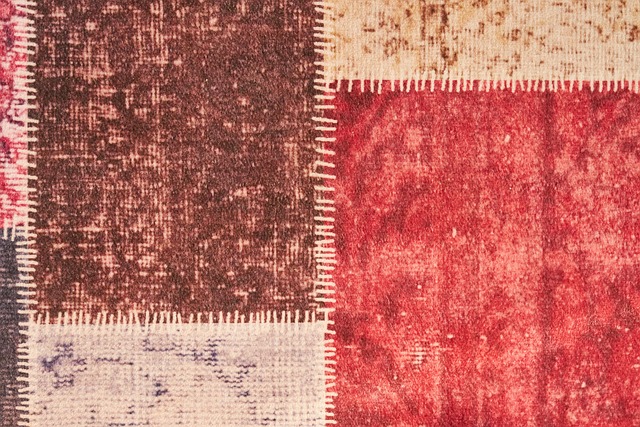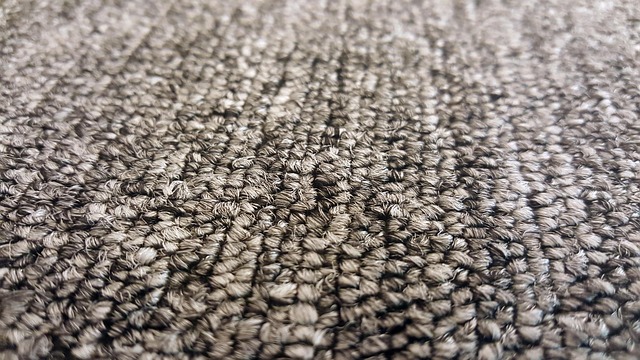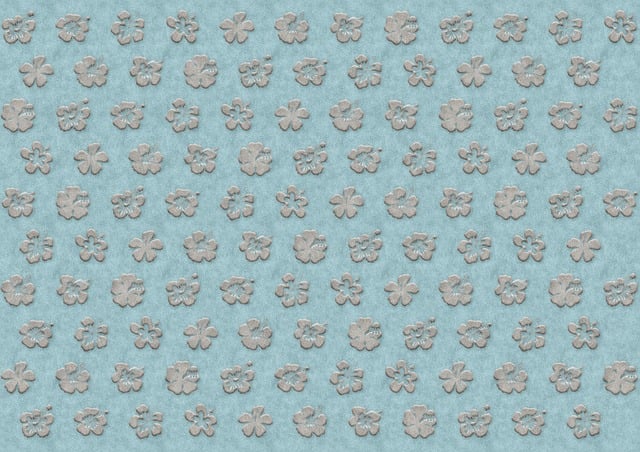Carpet shampooing is a powerful cleaning method that goes beyond regular vacuuming, targeting deep-seated grime, allergens, and pet odors. It uses specialized cleaning solutions, often applied with machines that combine hot water and agitation to loosen and extract dirt effectively. Pre-treating stains before shampooing improves cleaning efficiency. The process involves systematic steps like vacuuming, identifying and treating stains, applying shampoo, scrubbing gently, and thorough rinsing. Regular carpet shampooing prolongs carpet lifespan by preventing fiber damage and stain accumulation. Choosing the right shampoo based on stain types and fabric safety is crucial, with eco-friendly options gaining popularity for sustainable cleaning.
Looking to revive your carpets and remove stubborn stains? This guide is your go-to resource for all things related to carpet shampooing. From understanding the basics of this process to exploring various shampoo types and effective treatments for common stains, we’ve got you covered. Learn the step-by-step process, discover key factors in choosing the right shampoo, and gain pro-level tips for optimal results. Get ready to transform your carpets!
Understanding Carpet Shampooing: The Basics

Carpet shampooing is a process designed to deeply clean and remove stains from carpets and upholstery. Unlike regular vacuuming, which primarily removes loose dirt and debris, carpet shampooing goes deeper to tackle ingrained grime, allergens, and even pet odors. The basics involve using a specialized carpet shampoo or cleaning solution, often applied with a machine that combines hot water and agitation to loosen and extract dirt. This method is effective for various stains, from everyday spills to stubborn marks left by pets or food.
Understanding the mechanics behind carpet shampooing is key to achieving optimal results. The combination of heat and pressure helps break down grease, grime, and other contaminants, while the solution’s chemical composition targets specific types of stains. Regular carpet shampooing not only improves aesthetics but also extends the life of your carpets by preventing fiber damage caused by constant foot traffic and accumulated dirt.
Types of Shampoos for Stain Removal

When it comes to stain removal, specialized carpet shampoos are a must-have for deep cleaning. These shampoos are designed to tackle various types of stains, from everyday spills to stubborn marks that have set in over time. The key to their effectiveness lies in the unique formulation that combines powerful cleaning agents with gentle ingredients to ensure safety on different fabrics and fibers.
There are several types of carpet shampoo options available, catering to specific needs. Enzymatic shampoos, for instance, use natural enzymes to break down stains, making them ideal for handling organic spills like grass clippings or food drops. On the other hand, oxygen-based shampoos are versatile and safe for most fabrics, working effectively on common household stains without causing any damage. For tough, set-in stains, you might consider enzyme-blended or pre-treating shampoos that penetrate deep into the fibers to loosen and remove even the most persistent marks.
Pre-Treating Stains Before Shampooing

Before shampooing, pre-treating stains is a crucial step in effective carpet cleaning. This initial process involves applying a suitable stain remover or detergent directly to the affected area. For stubborn stains, a combination of warm water and a mild dishwashing liquid can be an effective natural solution. Leave the pre-treatment for several minutes to allow it to penetrate and break down the stain before moving on to shampooing.
This step is especially important for carpet shampooing as it helps to loosen dirt, grime, and any remaining stain particles, ensuring a deeper clean. Pre-treating not only improves the overall cleaning efficiency but also reduces the chance of permanent staining, making your carpets look as good as new.
The Step-by-Step Process of Carpet Shampooing

The process of carpet shampooing involves several key steps for effective stain removal. Firstly, vacuum the carpet to remove any loose dirt and debris. This ensures that the shampoo can penetrate deep into the fibres without excess particles interfering with the cleaning process. Next, identify the type of stain present, as different stains may require specific treatments. For example, pet stains often need enzymatic cleaners while coffee or wine stains might benefit from a combination of mild detergent and warm water.
Apply the chosen shampoo solution liberally to the stained area, making sure it covers evenly. Allow the shampoo to saturate the carpet for several minutes, giving it time to break down the stain. Then, using a clean brush or sponge, gently scrub the stained region in a back-and-forth motion. This helps to loosen and lift any embedded dirt. After scrubbing, rinse the area thoroughly with clean water to remove any residual shampoo.
Common Stains and Effective Shampoo Solutions

Common stains, such as those from pet accidents, spilled beverages, or track marks from muddy paws, can leave unsightly remnants on carpets and fabrics. Fortunately, carpet shampooing offers effective solutions for removing these stubborn marks. Specially formulated shampoos contain powerful cleaning agents that penetrate deep into the fibres, loosening dirt and debris while also neutralizing odours.
For best results, opt for carpet shampoos designed with enzymatic cleaners, which break down organic compounds responsible for tough stains. These gentle yet effective formulas are safe for most fabrics and can be easily applied using a carpet cleaning machine or by hand. Regular carpet shampooing not only keeps your space looking pristine but also helps to prolong the life of your carpets by preventing further damage from embedded dirt and stains.
Tips for Optimal Shampoo Results

For optimal results in stain removal using shampoo, especially for carpet shampooing, preparation is key. Before you begin, vacuum your carpets to remove any loose dirt or debris. This step ensures that your shampoo can effectively target stains without getting caught up in unwanted particles. Additionally, identify and test a small, inconspicuous area of the fabric for colorfastness to ensure the shampoo won’t cause discoloration.
During the shampooing process, follow the product’s instructions carefully regarding water temperature and application method. Generally, warm or cool water is recommended for most fabrics. Avoid using excessive water as it can lead to mold and mildew growth. Also, evenly distribute the shampoo over the stained area, massaging gently to work it in. This ensures thorough coverage and better absorption.
Maintenance After Shampooing: What to Expect

After shampooing your carpet, it’s important to understand what to expect in terms of maintenance and care. The initial results may be visible right away, with stains lightening or disappearing, but the true test lies in the long-term preservation of these newly cleansed fibres. Regular vacuuming is crucial to remove any residual dirt or debris that might have been dislodged during shampooing. This helps maintain the carpet’s texture and prevents the build-up of dust particles, ensuring a longer lifespan for your cleaned carpets.
Additionally, keeping the area well-ventilated after shampooing is essential, as it aids in drying and reduces the risk of moisture-related issues like mould or mildew growth. Avoid walking on the carpet immediately to allow the shampoo solution to evaporate naturally, preventing any potential staining from foot traffic. Following these simple maintenance steps will help preserve the fresh look and feel of your carpets, extending their durability and keeping them stain-free for longer periods.
Choosing the Right Carpet Shampoo: Key Factors

When selecting a carpet shampoo, several key factors come into play. First and foremost, consider the type of stains you’re dealing with. Different shampoos are formulated to target specific types of dirt and debris, from everyday foot traffic and pet accidents to tough, ingrained stains. Look for products designed specifically for carpet cleaning to ensure they have the right ingredients to break down and remove various contaminants effectively.
Another critical aspect is the shampoo’s safety for your carpet fibers. Opt for a product that’s gentle yet powerful enough to clean deeply without damaging or fading your carpet. Always check the fiber type and follow manufacturer recommendations for application and dilution rates. Additionally, consider the environmental impact; eco-friendly shampoos are becoming increasingly popular as consumers seek sustainable cleaning solutions.
